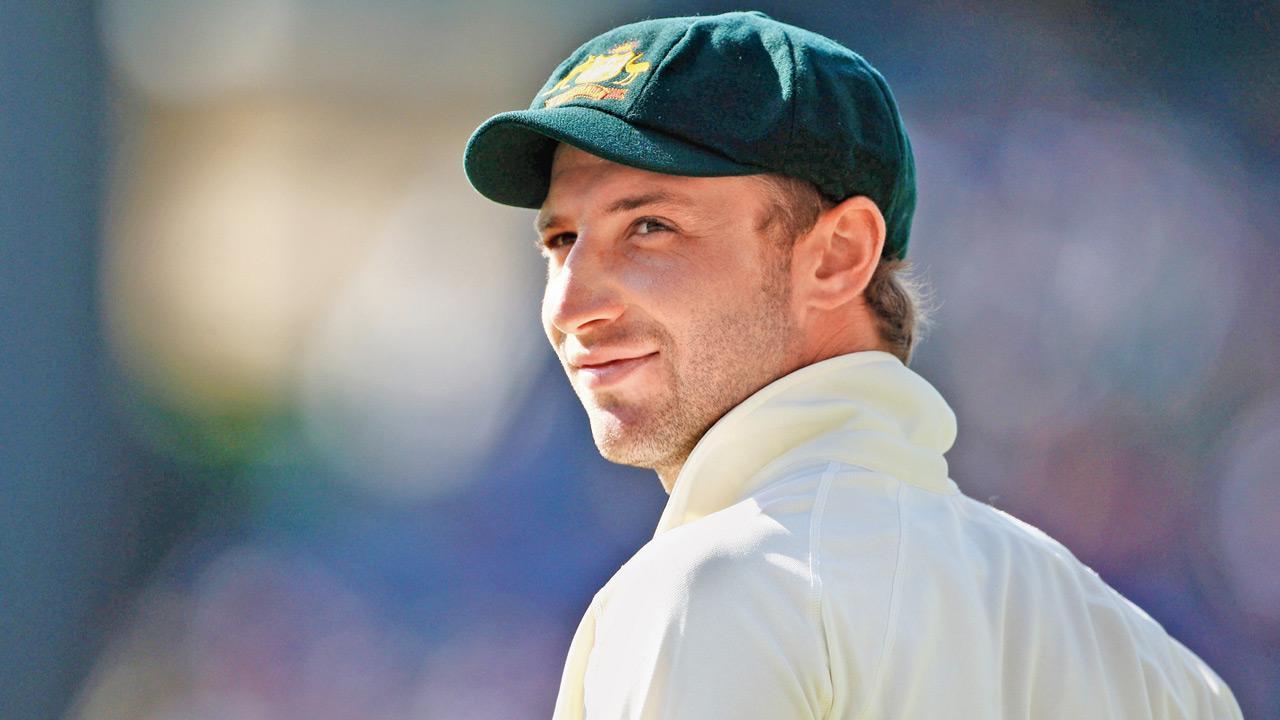The 10th anniversary of Hughes’ demise is a timely reminder of what he meant to the Australian players—popular, loyal, ability to make them smile and keep the game in perspective

The late Phillip Hughes during Day 2 of the Sydney Test between Australia and Pakistan on January 4, 2010. Pic/Getty Images
 Prior to Phillip Hughes’ untimely passing in 2014, I suspect that most cricketers felt that by walking through the gate they might get injured but never killed.
Prior to Phillip Hughes’ untimely passing in 2014, I suspect that most cricketers felt that by walking through the gate they might get injured but never killed.
ADVERTISEMENT
Following Hughes’ tragic accident that line of thinking changed dramatically.
A 2016 New South Wales coronial enquiry concluded no one was to blame for Hughes’ death. That investigation only served to confirm just how unlucky Hughes was to suffer a terminal injury.
Sensibly, Cricket Australia (CA) decided to implement a safety revue following this Sheffield Shield tragedy. Imagine my surprise when I asked CA’s CEO James Sutherland whether the revue included technique. “I don’t know,” came back Sutherland’s surprise reply. When I eventually obtained an answer from a CA employee, technique was not included in the revue. This is nonsensical as the quickest way to improve safety is for a player to develop a good technique to combat the short-pitched delivery.
The 10-year anniversary of Hughes’ demise is a timely reminder of what he meant to the Australian players. I spoke to former Australian opener David Warner, a good friend, who acknowledged Hughes’ image at the Sydney Cricket Ground every time he walked past the dressing room wall.
Warner described Hughes as a player who was “flamboyant at times with a good defence and the mentality of a stroke maker.”
As a character, Hughes was popular with other players because of his loyalty and ability to make them smile and keep the game in perspective. When Hughes, a man off the land in northern New South Wales spoke about cattle, Warner remembers him saying, “You keep feeding them and they get fat.”
When players asked Hughes if he was going to join them for a round, he would laughingly respond; “Why would I play golf?” Warner explained how difficult it was to play the Test match following Hughes’ passing. “We were all very shaken up,” recalled Warner, “but we asked ourselves what would Phil want? We decided he would want us to play,” said Warner, “and that was part of the healing process.”
That process worked well for Warner who scored a memorable century in each innings. Australia finished up winning a thrilling Test against India as Virat Kohli also produced skilful twin tons. The game featured both teams honouring Hughes by standing in remembrance as the clock ticked 408, his Test player number.
Warner admitted that for the rest of his career it was eerie how he would occasionally glance at an Oval clock and the time would show 4:08. At other times he’d check the scoreboard and somewhere there’d be the figure 63, the final score Hughes was on when he was hit at the SCG. “It was uncanny,” sighed Warner, “but he was always with us.”
Hughes had an up-and-down career with the highlight being a century in each innings of the Kingsmead Test. It was only Hughes’ second Test and he faced a quality South African pace attack of Dale Steyn, Morne Morkel, Makhaya Ntini and Jacques Kallis.
Warner said there was a large expectation lumped on to bright prospects. However he explained, “Hughes’ final average didn’t reflect the quality of player he was.”
He displayed his quality and versatility in scoring two limited overs centuries for Australia. In 2014 he reconfirmed his ability by making his highest first-class score of 243 not out for Australia A.
Hughes’ mammoth score looked as though it would result in yet another recall to the Australian Test side. Sadly this never occurred as just a few months later he suffered that fatal blow while batting for South Australia in the SCG Shield match.
The passing of Phil Hughes is a stark reminder of the danger that players face on the cricket field. However, there is only one response to the occasional preposterous suggestion that the bouncer be eradicated from the game; “If you want to avoid the risk of injury then don’t walk through the gate.”
Former Australia captain Ian Chappell is one of the leading voices in world cricket
Clayton Murzello’s Pavilion End column will be back next week.
The views expressed in this column are the individual’s and don’t represent those of the paper.
 Subscribe today by clicking the link and stay updated with the latest news!" Click here!
Subscribe today by clicking the link and stay updated with the latest news!" Click here!







